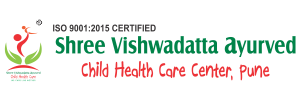Eating Disorders
Eating Disorders
It is commonly thought that eating disorders are a lifestyle choice, but this is not true. Eating disorders form a grave and life threatening illness that disrupts a person’s eating habits. Having an obsession for food, body weight, and body shape also signals an eating disorder. Common eating disorders that are clinically known are anorexia nervosa, bulimia nervosa, and binge-eating disorders.
Eating disorders have been described under the Annadvesha, Bhaktadvesha, Aruchi. Ayurveda, the scholars in the past were well aware of deep impacts of food items on our body and mind, and hence, Ayurvedic texts always recommend one should be cautious about the food items if you want to remain healthy and happy.
Eating disorders can be correlated under the manasik rogas where the capability of the mind to decide what is right is occluded by obsessive beliefs.
Ayurveda has described the manas (mind) and its vishayas i.e. the areas of handling in a conspicuous manner. Obsessive compulsive disorders are considered to be due to manasika bhaavas like dhee (memory), dhriti (thoughts) etc.
The disease is found more often in individuals with the heena or alpa bala(low resilience) of satva (mind). Any bad activity, physical, mental or verbal termed as prajna-paradhacan be a cause for the condition.

Causes Of Eating Disorders
The cause of an eating disorder is usually a complex interaction of hereditary, physical, behavioral, psychological, and social factors.
Symptoms Of Eating Disorders
The symptoms of an eating disorder vary as per the underlying type of disorder. E.g Anorexia nervosa or bulimia etc
In Anorexia nervosa, the following symptoms are seen :
- Extremely restricted eating
- Extreme thinness (emaciation)
- Wanting to be as thin as possible
- Always fearing gaining any weight
- Abnormal body image
Those with bulimia nervosa show the following symptoms –
- Always have an inflammation and soreness in throat
- Swelling of salivary glands
- Decaying and breaking ofteeth
- Acid reflux and other stomach problems
- High laxative use
- Signs of dehydration
- Calluses or scars on the knuckles or hands from sticking fingers down the throat to induce vomiting
- Puffy “chipmunk” cheeks caused by repeated vomiting
- Not underweight – Men and women with bulimia are usually normal weight or slightly overweight. Being underweight while purging might indicate a purging type of anorexia
- Frequent fluctuations in weight – Weight may fluctuate by 10 pounds or more due to alternating episodes of bingeing and purging
And those with Binge eating disorder may show the following –
- Eating unusually large amounts of food in a specific amount of time
- Overeating even if not hungry
- Quick gulping of food
- Eating secretly
- Regularly dieting but no losing of weight
Ayurvedic Treatment For Eating Disorders
This includes the three components of chikitsa such as yukti vyapasraya, daiva vyapasraya and satvavachaya chikitsa. In the first entity, aushada, ahara, vihara are properly administered as per the assessed dosha status of the condition. Here either of the sodhana chikisa or shamana chikitsa are recommended.
Abhyanga, Nasyakarma, Vasti Chikitsa may be beneficial
Diet Recommendations (Aahar)
A wholesome healthy diet should be adhered to for mental health and happiness.
Certain herbs belonging to the class of Medhya drugs such as Mandukaparni (Centella asiatica), Brahmi (Bacopa monnieri), Jatamansi (Nordostachys jatamansi) and Yastimadhu (Glycyrrhiza glabra) should be used often as a part of diet and lifestyle.
Lifestyle Changes (Vihar)
- Achar rasayan (Good behavior and lifestyle) influences the Pravar Satva (Higher mental equilibrium).
- Supportive psychotherapy is recommended.

